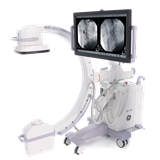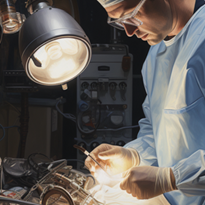In the field of surgery, precision is of paramount importance. Surgeons rely on their skills, expertise, and the use of advanced equipment to ensure successful procedures. One vital component that plays a significant role in enhancing surgical precision is surgical and procedure lights. These specialized lighting systems provide optimal illumination of the surgical field, allowing surgeons to perform intricate procedures with utmost accuracy and efficiency. This article explores the importance of surgical and procedure lights in enhancing surgical precision and highlights their crucial role in modern operating rooms.
The Importance of Surgical and Procedure Lights
1. Illuminating the Surgical Field
Surgical and procedure lights are designed to provide high-intensity illumination directly onto the surgical field. Proper lighting is essential for surgeons to visualize the area of operation clearly. By ensuring a well-illuminated surgical field, these lights help surgeons identify important anatomical structures, distinguish between tissues, and perform precise maneuvers.
2. Reducing Shadows and Glare
Shadows and glare can hinder a surgeon's ability to visualize the surgical site effectively. Surgical and procedure lights are designed to minimize shadows by strategically positioning multiple light sources to eliminate obstructions and provide uniform illumination. Additionally, advanced lighting technologies, such as diffusers and reflectors, are utilized to reduce glare, allowing surgeons to work without visual distractions.
3. Enhancing Color Rendition
Accurate colour perception is crucial during surgical procedures. Surgical and procedure lights are engineered to provide optimal color rendition, allowing surgeons to differentiate between different tissues based on their distinct color characteristics. This enables precise identification of critical structures and assists in making informed decisions during the surgical process.
4. Adjustable Intensity and Focus
Different surgical procedures may require varying levels of illumination. Surgical and procedure lights offer adjustable intensity controls, enabling surgeons to tailor the lighting to their specific needs. Additionally, some lights feature adjustable focus capabilities, allowing surgeons to concentrate the light precisely where it is needed most, enhancing visualization and precision during intricate procedures.
5. Compatibility with Sterile Environments
Maintaining a sterile environment in the operating room is crucial to prevent infections and ensure patient safety. Surgical and procedure lights are designed with materials and features that facilitate easy cleaning and sterilization. This ensures that these lights can be safely used in sterile environments without compromising cleanliness or introducing contaminants.


Find the right Surgical & Operating Light
Compare quotes from expert Australian suppliers and make the best choice. It's free, quick and easy!
Best Practices for Using Surgical and Procedure Lights
1. Proper Positioning and Alignment
Surgical and procedure lights should be positioned and aligned to provide optimal illumination of the surgical field. Proper positioning minimizes shadows and glare while maximizing visibility for the surgical team. Surgical light systems often feature adjustable arms or suspension systems, allowing precise placement and alignment based on the specific procedure and surgeon's preferences.
2. Regular Maintenance and Calibration
To ensure optimal performance, surgical and procedure lights require regular maintenance and calibration. Routine inspections, cleaning, and bulb replacements should be performed as recommended by the manufacturer. Regular calibration of light intensity and colour temperature ensures consistent and accurate lighting during surgical procedures.
3. Integration with Other Surgical Equipment
Surgical and procedure lights can be integrated with other surgical equipment, such as imaging systems or video capture devices, to enhance visualization and documentation. The integration allows real-time display of the surgical field on monitors, facilitating collaboration and education among the surgical team.
4. Adhering to Safety Guidelines
Operating room safety should always be a priority. When using surgical and procedure lights, it is essential to follow safety guidelines, such as proper handling of electrical components, ensuring adequate grounding, and avoiding contact between light systems and flammable materials.
Explanation Of How Surgical And Procedure Lights Contribute To Optimal Visibility During Surgical Interventions
Surgical and procedure lights play a crucial role in providing optimal visibility during surgical interventions. These specialized lights are designed to illuminate the surgical field, enabling surgeons and medical professionals to perform procedures with precision and accuracy. Here are some key ways in which surgical and procedure lights contribute to optimal visibility:
- Bright and Adjustable Lighting: Surgical lights are designed to produce a high-intensity, shadow-free illumination that closely resembles natural daylight. This brightness ensures that the surgical field is well-lit, allowing surgeons to clearly visualize the anatomical structures and details of the surgical site. The intensity of the lights can be adjusted to suit the specific needs of the procedure, ensuring optimal illumination without causing discomfort to the surgical team or the patient.
- Proper Color Rendering: Surgical lights are engineered to provide accurate color rendering, meaning they reproduce colors faithfully and accurately. This is important during surgery, as it allows surgeons to distinguish between different tissues, blood vessels, and other vital structures with precision. Accurate color rendering ensures that the surgeon can identify abnormalities or potential issues during the procedure.
- Shadow Management: Shadows can obscure the surgical field and make it challenging for surgeons to see clearly. Advanced surgical lights are designed to minimize shadows by utilizing multiple light sources, angling the lights appropriately, and employing reflective surfaces or diffusers. This shadow reduction technique ensures that the surgical team has a clear and unobstructed view of the operative site.
- Adjustable Light Patterns: Different surgical procedures may require specific lighting patterns. Modern surgical lights offer the flexibility to adjust the light patterns according to the procedure's requirements. For example, some lights allow the surgeon to switch between a focused beam and a broader field of illumination. This adaptability ensures that the lighting can be optimized for different surgical scenarios, enhancing visibility and facilitating precise surgical maneuvers.
- Heat Management: Surgical lights generate a significant amount of heat due to the high-intensity bulbs. To maintain a comfortable environment for the surgical team and prevent tissue damage, modern lights incorporate heat management systems. These systems typically include cooling mechanisms, heat-absorbing filters, and heat dissipation features to minimize the heat emitted by the lights.
Tips For Choosing The Appropriate Light Intensity And Color Temperature For Different Types Of Procedures
When choosing the appropriate light intensity and color temperature for different types of procedures, several factors need to be considered. Here are some tips to help you make the right choices:
- Understand the Procedure: Different surgical procedures have varying requirements for light intensity and color temperature. Consider the nature of the procedure, the anatomical structures involved, and the level of detail required. For delicate procedures or those involving small structures, higher light intensity and a cooler color temperature may be beneficial to enhance visibility.
- Consult with Surgeons and Medical Staff: Collaborate with the surgical team and medical staff to determine their preferences and requirements. They have firsthand experience and can provide valuable insights regarding the ideal lighting conditions for specific procedures. Take their input into consideration when selecting light intensity and color temperature.
- Balance Brightness and Comfort: While bright light is crucial for optimal visibility, it should be balanced with the comfort of the surgical team and the patient. Excessive brightness can cause discomfort, glare, or even eye fatigue. Ensure that the selected light intensity is adequate for visibility without causing discomfort to those involved in the procedure.
- Consider Color Rendering: Color rendering refers to the ability of the light source to accurately reproduce colors. Different tissues and structures may have distinct color characteristics, and accurate color rendering is essential for proper identification and differentiation during surgery. Choose a light source with a high color rendering index (CRI) to ensure accurate color representation.
- Tailor Lighting to Surgeon Preferences: Individual surgeons may have specific preferences when it comes to light intensity and color temperature. Some surgeons may prefer higher intensity lights, while others may prefer a warmer or cooler color temperature. Take into account the preferences of the surgical team to create a comfortable working environment that suits their needs.
- Consider Ambient Lighting: Ambient lighting in the operating room can affect the perception of light intensity and colour temperature. Evaluate the impact of ambient lighting and ensure that the surgical lights can compensate for any potential colour shifts or loss of intensity caused by the overall room lighting.
- Explore Adjustable Lighting Systems: Opt for surgical lights that offer adjustable light intensity and colour temperature settings. This flexibility allows customization based on the specific requirements of different procedures and surgeon preferences. Adjustable lighting systems can provide versatility and ensure optimal lighting conditions for various surgical interventions.
- Seek Professional Advice: If you are unsure about the appropriate light intensity and color temperature for a particular procedure, consult with lighting experts, manufacturers, or lighting consultants. They can provide guidance based on their expertise and help you select the most suitable lighting options.


Find the right Surgical & Operating Light
Compare quotes from expert Australian suppliers and make the best choice. It's free, quick and easy!
Insights Into Lighting Considerations For Specific Surgical Specialties According To Usage Sphere
Different surgical specialties have unique lighting considerations based on the specific nature of the procedures they perform. Here are some insights into lighting considerations for specific surgical specialties:
Orthopedic Surgery:
- Light Intensity: Orthopedic surgeries often involve intricate procedures on bones, joints, and soft tissues. High light intensity is essential to clearly visualize small anatomical structures and achieve precise alignment during procedures such as joint replacements or fracture fixations.
- Shadow Management: Effective shadow reduction is crucial in orthopedic surgery, as shadows can hinder accurate assessment of bone alignment and screw placement. Utilizing multiple light sources and adjustable lighting angles can help minimize shadows.
- Colour Temperature: A neutral or cooler colour temperature (around 4000-4500 Kelvin) is generally preferred in orthopedic surgery. This helps enhance the visibility of bones and enables surgeons to differentiate between tissues and anatomical structures.
Neurosurgery:
- Light Intensity: Neurosurgical procedures require high-intensity lighting to illuminate the surgical field and provide excellent visibility. Bright and focused lighting helps neurosurgeons identify delicate structures, such as nerves and blood vessels, and perform intricate procedures with precision.
- Shadow Management: Minimizing shadows is crucial in neurosurgery to avoid obscuring critical structures and reduce the risk of surgical errors. Adjustable light patterns, strategic light positioning, and the use of reflective surfaces can help manage shadows effectively.
- Colour Temperature: A cooler colour temperature (around 4500-5000 Kelvin) is commonly used in neurosurgery. This temperature enhances the contrast between different tissues, allowing neurosurgeons to discern fine details and identify abnormalities more accurately.
Ophthalmic Surgery:
- Light Intensity: Ophthalmic surgery, involving delicate procedures on the eyes, requires precise and focused lighting. Optimal light intensity allows ophthalmic surgeons to visualize fine ocular structures, perform microsurgical techniques, and achieve accurate surgical outcomes.
- Shadow Management: Minimizing shadows is critical in ophthalmic surgery to prevent obstruction of the surgical field. Proper positioning of the surgical lights, utilization of coaxial lighting (where light source and visualization are aligned), and the use of small-diameter light heads can help reduce shadows.
- Colour Temperature: A neutral colour temperature (around 4000-4500 Kelvin) is often preferred in ophthalmic surgery. This temperature provides good colour rendering, enabling accurate visualization of eye tissues and enhancing the surgeon's ability to detect subtle variations in colour.
Cardiothoracic Surgery:
- Light Intensity: Cardiothoracic surgeries, involving procedures on the heart and chest, require high-intensity lighting to ensure clear visualization of intricate structures and vessels. Bright and shadow-free illumination aids in the accurate identification and manipulation of delicate cardiac and thoracic tissues.
- Shadow Management: Effective shadow reduction is crucial in cardiothoracic surgery to prevent obstructions and facilitate optimal visualization. Balanced lighting from multiple angles and the use of reflective surfaces can help minimize shadows and enhance visibility.
- Colour Temperature: A neutral colour temperature (around 4000-4500 Kelvin) is commonly used in cardiothoracic surgery. This temperature provides accurate colour representation, enabling surgeons to differentiate between tissues, vessels, and anomalies effectively.
In conclusion, surgical and procedure lights play a vital role in enhancing surgical precision by providing optimal illumination of the surgical field. These specialized lighting systems contribute to optimal visibility during surgical interventions through bright and adjustable lighting, proper colour rendering, shadow management, and heat management. By considering the specific lighting requirements of different surgical specialties, such as orthopedic surgery, neurosurgery, ophthalmic surgery, and cardiothoracic surgery, healthcare professionals can choose the appropriate light intensity and colour temperature to optimize visibility and facilitate precise surgical maneuvers. Additionally, adhering to best practices, such as proper positioning, regular maintenance, integration with other surgical equipment, and adherence to safety guidelines, ensures the effective and safe use of surgical and procedure lights in modern operating rooms. Overall, surgical and procedure lights are indispensable tools that contribute significantly to achieving successful surgical outcomes through enhanced precision and visibility.



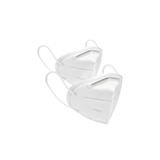
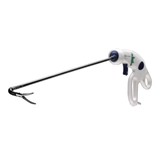
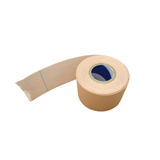
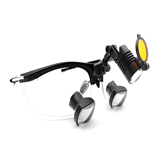
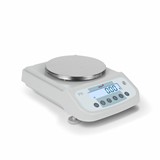

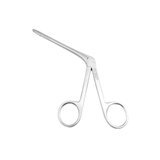
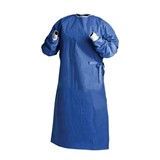
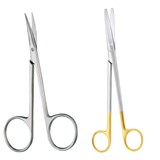
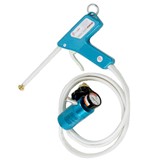
%20(1)-160x160-state_article-rel-cat.png)
